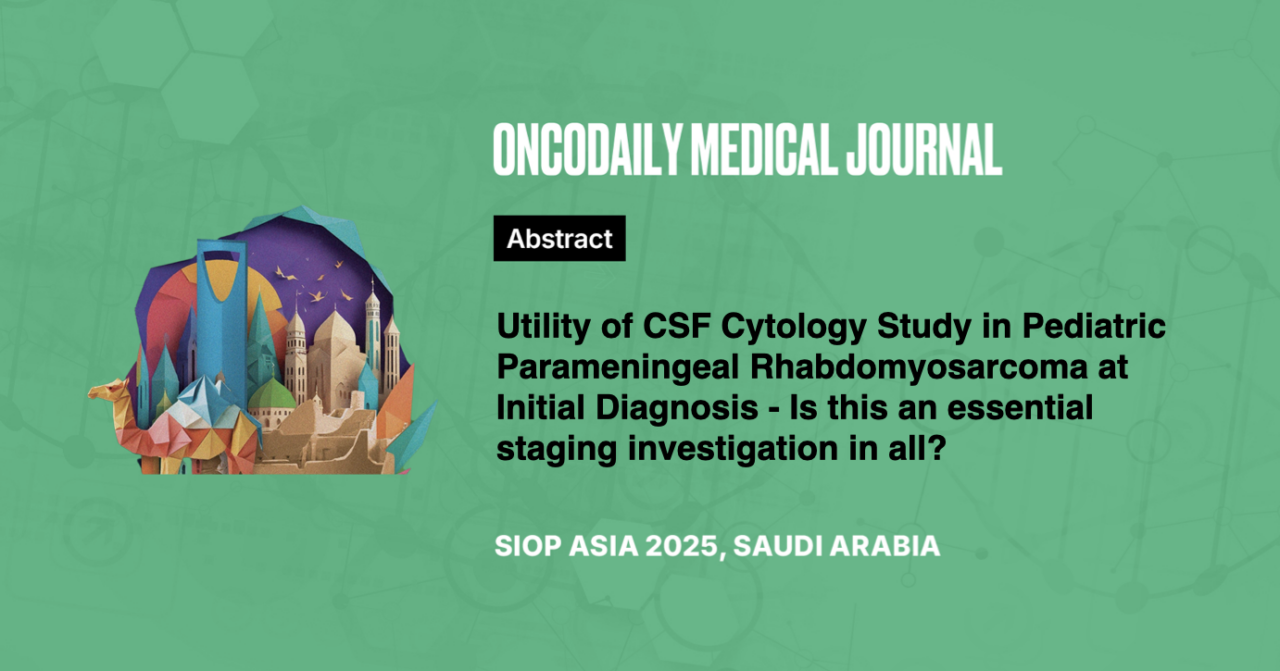Utility of CSF Cytology Study in Pediatric Parameningeal Rhabdomyosarcoma at Initial Diagnosis – Is this an essential staging investigation in all?
Abstract
Introduction: Parameningeal Rhabdomyosarcoma (PM-RMS) has a tendency for leptomeningeal spread and hence cerebrospinal fluid (CSF) analysis has been an integral part of staging. Evidence for the utility of this invasive investigation at first presentation is scarce with a reported incidence of 0 (n=0/192)- 7.5% (n=2/26) in the available studies. This study analyses the utility of CSF analysis at initial diagnosis.
Methodology: A retrospective analysis of treatment-naive patients with PM-RMS, aged ≤15 years, from January 2013 to October 2024 was performed. The staging was by FDG-PET CECT scan and CSF cytology with MRI brain wherever required. Patients were treated with the IRS-IV protocol. Descriptive statistics were used for data analysis.
Results: Of 127 patients with PM-RMS, 97 patients were eligible for analysis. The median age was 5.5 years. The most common site of the primary tumor was the nasopharynx (n=32, 33%) followed by the nasal cavity and paranasal sinuses (n=29, 30%) with embryonal histology being the commonest (n=59, 61%). Fusion negatives were 75% (n=56/75). Staging details were: stage 2-13% (n=13), stage 3-72% (n=70), stage 4-15% (n=14). Cranial Bone Erosion (CBE) was seen in 73% (n=71), and Intracranial Extension (ICE) in 49% (n=48).
None of the 97 patients tested positive for CSF involvement. 92 patients of this cohort completed treatment, of which 40 progressed/relapsed. Of these 40 patients, 19 had relapse/progression in the central nervous system (16/19 had baseline ICE) as follows: mass lesion-14, leptomeningeal enhancement-8, alone or combined). CSF analysis was positive for involvement at relapse/progression in 5/13 tested, all of whom had high-risk features at first diagnosis (ICE).
Conclusion: The utility of invasive staging investigation like CSF study in PM-RMS at initial diagnosis seems limited and can safely be restricted to patients with high-risk features like ICE.





